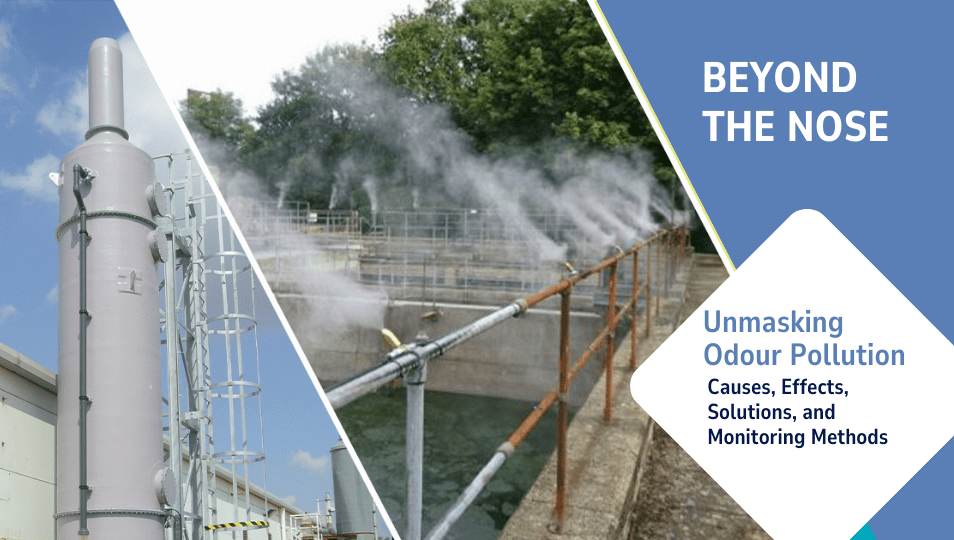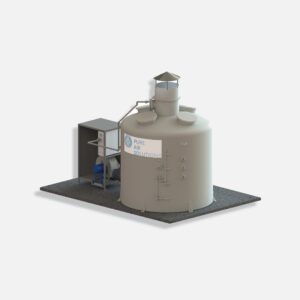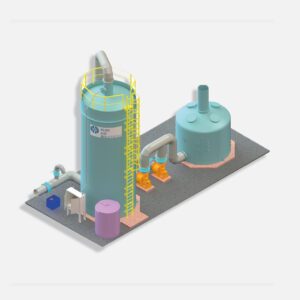Introduction:
In the grand tapestry of environmental concerns, odour pollution often wafts under the radar, yet its impact is far from elusive. This comprehensive blog dives into the intricate nuances of odour pollution, unraveling its causes, effects on health and well-being, innovative solutions, and the methods employed to monitor and manage this olfactory challenge.
Causes of Odour Pollution:
Industrial Emissions:
Factories and manufacturing plants release volatile organic compounds (VOCs) and other odorous substances into the air during various processes.
Agricultural Activities:
Livestock farming, fertilizer application, and pesticide use contribute to the release of odorous compounds, affecting nearby communities.
Waste Treatment Facilities:
Landfills, sewage treatment plants, and waste disposal sites emit unpleasant odours as organic matter decomposes.
Transportation:
Vehicle emissions, especially from older models and diesel engines, can produce offensive odours.
Effects of Odour Pollution:
Health Impacts:
Prolonged exposure to foul odours can lead to respiratory issues, headaches, nausea, and stress, impacting both physical and mental health.
Quality of Life:
Odour pollution diminishes the quality of life for individuals in affected areas, influencing daily activities, outdoor enjoyment, and even property values.
Environmental Impact:
Odour pollution may disrupt ecosystems, altering wildlife behavior and potentially causing long-term ecological imbalances.
Solutions to Odour Pollution:
Biological Odour Control:
Utilize biological methods, such as biofilters and biotrickling filters, that employ microorganisms to break down odour-causing compounds.
Technological Interventions:
Invest in advanced technologies like gas-phase air filtration systems that effectively capture and neutralize odour molecules.
Community Engagement:
Foster collaboration between industries, local communities, and regulatory bodies to raise awareness, share information, and develop sustainable solutions.
Odour Legislation:
Implement and enforce stringent regulations on odour emissions, encouraging industries to invest in odour abatement technologies and adhere to best practices.
Public Reporting Systems:
Establish platforms for the public to report odour incidents, facilitating quicker response times and improved management.
Methods of Odour Pollution Monitoring:
Sensory Methods:
Trained sensory panels evaluate odour intensity, character, and hedonic tone. Odour bagging involves collecting air samples for assessment by a panel.
Instrumental Methods:
Electronic Noses (E-Noses) mimic human smell using sensor arrays, while Gas Chromatography-Mass Spectrometry (GC-MS) provides a detailed chemical analysis of odorous compounds.
Modeling and Simulation:
Dispersion modeling and odour plume mapping use computer models and GIS technology to simulate odour dispersion and map its distribution.
Meteorological Data Integration:
Meteorological parameters are crucial for understanding how odours disperse; integrating weather data enhances the accuracy of odour impact assessments.
Innovations in Monitoring:
Real-time sensor networks, mobile apps for public reporting, and the integration of machine learning and AI enhance the precision and efficiency of odour monitoring.
Challenges and Future Prospects:
Subjectivity and Integration:
Overcoming the subjectivity of human evaluations and seamlessly integrating data from various monitoring methods pose ongoing challenges.
Technological Advancements:
Future trends will likely focus on harnessing advanced technologies to create a comprehensive understanding of odour pollution and its sources.
Conclusion:
Odour pollution may be intangible, but its repercussions are palpable. By unraveling its causes, understanding its effects, and implementing innovative solutions alongside advanced monitoring methods, we can clear the air and pave the way for a more fragrant and sustainable future. It’s time to bring odour pollution into focus and ensure that our environment is not just visually clean but also aromatically pleasant for generations to come.




